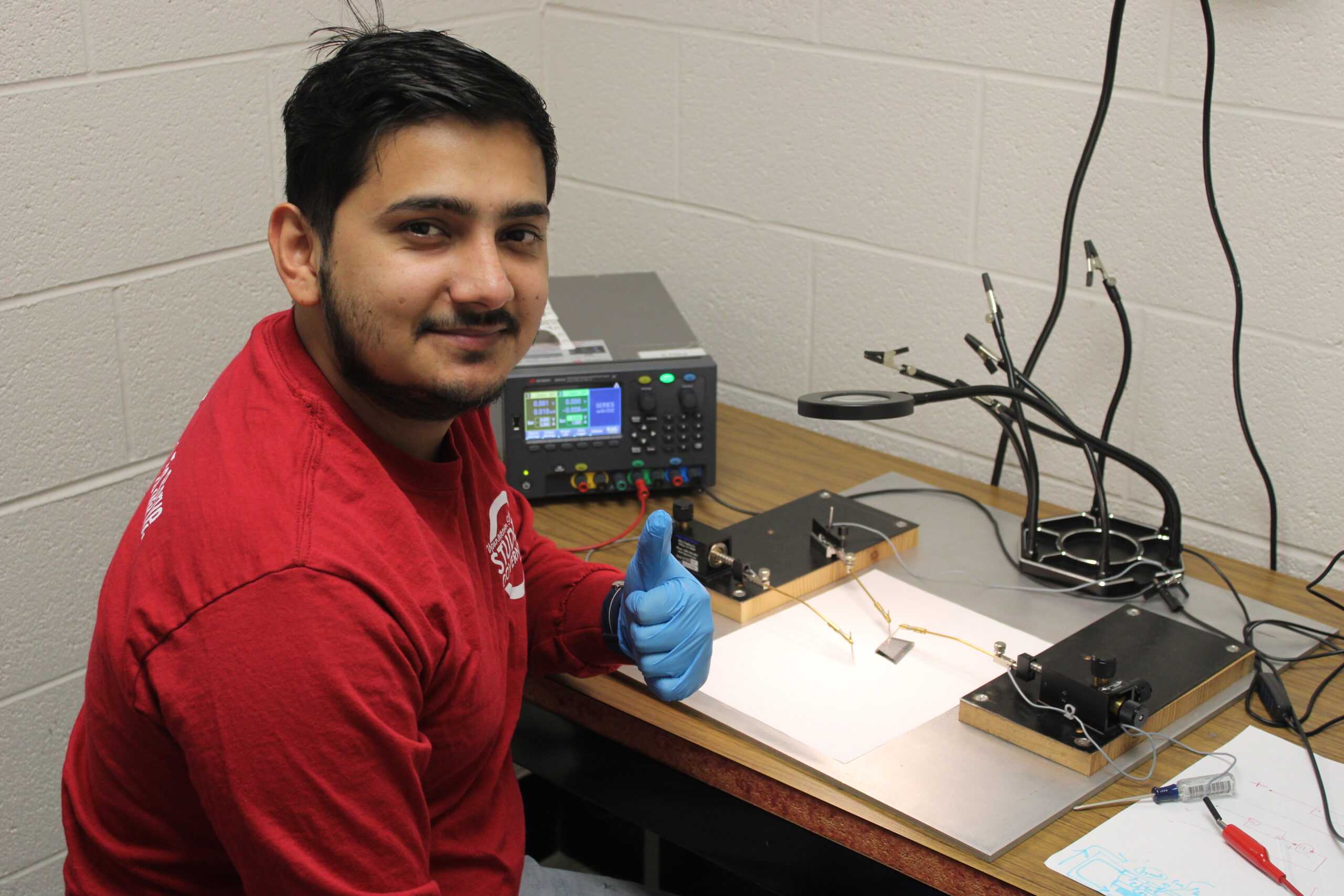By Natalie Lasky
*Editor’s Note: This story has been updated and corrected since its initial publication.
Suman Devkota, a Youngstown State University student pursuing a master’s degree in electrical engineering, has created technology that could change how solar cells absorb energy.
Solar cells are electrical devices that convert sunlight into electricity through a process known as photovoltaics, which is used in solar panels. A material called cadmium telluride, which is a compound formed from cadmium and tellurium, is used in photovoltaics.
Devkota explained how the photovoltaic process he uses is called threshold switching, which creates a conductive path for electricity to travel without the need to precut pathways using machinery and could prove useful.
“I am experimentally verifying the process of threshold switching in [cadmium telluride photovoltaic] threshold switching. [It] is a well-controlled process … This could possibly eliminate the use of expensive laser technology that current manufacturers are using during fabrication of [photovoltaic] cells,” Devkota stated.
Devkota said his next step is researching chromium layer deposits of various thickness to verify which thickness will be best to use in his experiments going forward.
Vamsi Borra, a YSU engineering professor who instructs Devkota, explained how the collection of electrons, is done through the process of threshold switching.
“We can just use a threshold switching, which [is a] phenomenon — if you apply a voltage and we create a shock. That shock will enable us to collect these electrons and stop having the conventional laser engraving to get the electrons,” Borra said.
Devkota is currently working on a follow-up paper intended to be peer-reviewed by fellow engineers from both YSU and the University of Toledo. Daniel Georgiev, a UT electrical engineering professor, collaborated on Devkota’s research and explained how laser scribing helps the technology work.
“In semiconductor devices and transistors and diodes and other solar cell technologies, this might have application [that] generally contacts semiconductor devices. That’s where technology can become important, or the development of course is done because these are just first steps into proving the concept,” Georgiev said.
Devkota also recently published an article called Threshold Switching in CdTe Photovoltaics in “The Electrochemical Society Journal.” The publication led Devkota to attend the Electrochemical Society 242nd meeting, in Atlanta.
The ECS conference allowed Devkota and other engineers to explain the new technology to manufacturers.
For more information regarding the solar cell technology applications and the peer-reviewed article of threshold switching in CdTe Photovoltaics, go to The Electrochemical Society’s website.
